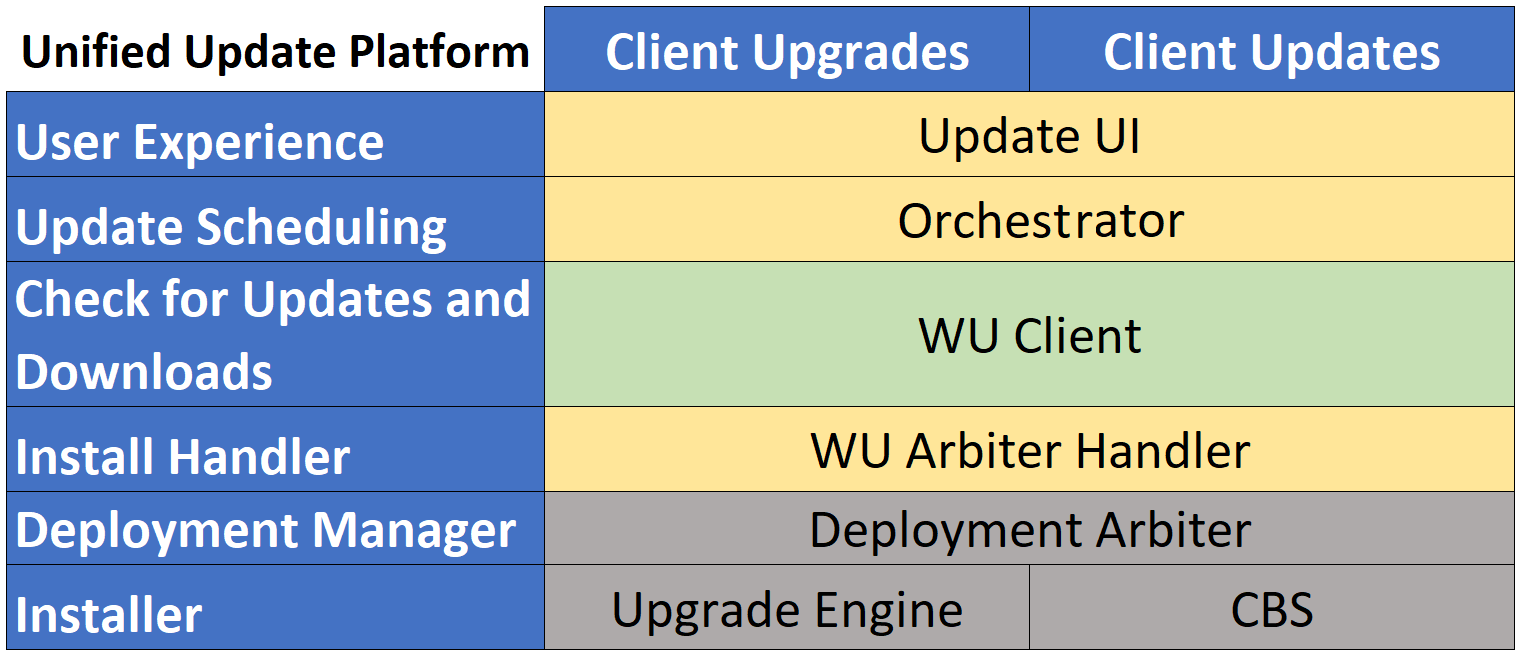Note
Access to this page requires authorization. You can try signing in or changing directories.
Access to this page requires authorization. You can try changing directories.
Applies to: Windows 10
With the release of Windows 10, we moved the update model to the Unified Update Platform. Unified Update Platform (UUP) is a single publishing, hosting, scan and download model for all types of OS updates, client devices for all Windows-based operating systems, for everything from monthly quality updates to new feature updates.
Use the following information to get started with Windows Update:
- Understand the UUP architecture
- Understand how Windows Update works
- Find Windows Update log files
- Learn how to troubleshoot Windows Update
- Review common Windows Update errors and check out the error code reference
- Review other resources to help you use Windows Update
- Review Windows IT Pro Blog section of Microsoft Blogs.
Unified Update Platform (UUP) architecture
To understand the changes to the Windows Update architecture that UUP introduces let's start with some new key terms.

Update UI - The user interface to initiate Windows Update check and history. Available under Settings --> Update & Security --> Windows Update.
Update Session Orchestrator (USO)- A Windows OS component that orchestrates the sequence of downloading and installing various update types from Windows Update.
Update types-
OS Feature updates
OS Security updates
Device drivers
Defender definition updates
Note
Other types of updates, like Office desktop updates, are installed if the user opts into Microsoft Update.
Store apps aren't installed by USO, today they are separate.
Windows Update Client/ UpdateAgent - The component running on your PC. It's essentially a DLL that is downloaded to the device when an update is applicable. It surfaces the APIs needed to perform an update, including those needed to generate a list of payloads to download, as well as starts stage and commit operations. It provides a unified interface that abstracts away the underlying update technologies from the caller.
Windows Update Arbiter handle- Code that is included in the UpdateAgent binary. The arbiter gathers information about the device, and uses the CompDB(s) to output an action list. It is responsible for determining the final "composition state" of your device, and which payloads (like ESDs or packages) are needed to get your device up to date.
Deployment Arbiter- A deployment manager that calls different installers. For example, CBS.
Additional components include the following-
- CompDB - A generic term to refer to the XML describing information about target build composition, available diff packages, and conditional rules.
- Action List - The payload and additional information needed to perform an update. The action list is consumed by the UpdateAgent, as well as other installers to determine what payload to download. It's also consumed by the "Install Agent" to determine what actions need to be taken, such as installing or removing packages.